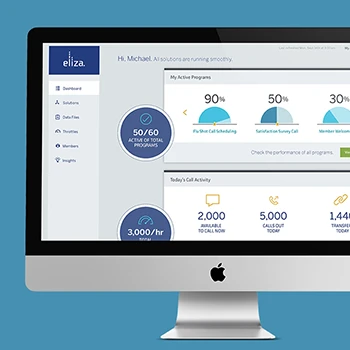What exactly is AI UX design and how does it differ from traditional UX?
AI UX design focuses on creating user experiences where artificial intelligence algorithms extend their capabilities to become indispensable products or services. Unlike traditional UX that designs for predictable user flows, AI UX must account for machine learning behaviors, algorithm responses, and dynamic content generation. Through our Experience Thinking framework, we examine how AI impacts brand perception, content generation, product interactions, and service delivery to create connected experiences that feel natural and trustworthy.
Tip: Start by mapping which parts of your user journey could benefit from AI enhancement rather than trying to implement AI everywhere at once.
Why do tech companies need specialized AI UX design rather than adding AI features to existing products?
AI fundamentally changes user expectations and interaction patterns. When users engage with AI-powered features, they unconsciously assess the system's emotional intelligence and trustworthiness. Simply adding AI features to existing products often creates disconnected experiences that feel artificial or unreliable. Our approach integrates AI considerations into the complete Experience Thinking framework - ensuring brand consistency, content relevance, product usability, and service reliability work together to create seamless AI-human collaboration.
Tip: Audit your current user experience to identify where AI could solve actual user problems rather than just adding impressive technology features.
How does AI UX design address user trust and transparency concerns?
Trust in AI systems develops through consistent, predictable experiences that respect user agency. We design transparency mechanisms that help users understand what the AI is doing, why it's making specific recommendations, and how they can influence or override decisions. This includes clear feedback loops, explainable AI outputs, and maintaining human control over critical decisions. Trust builds through good experiences, not just communication - users need to see reliable AI behavior over time.
Tip: Design AI interactions that clearly indicate when the system is learning from user behavior and what data is being used to personalize experiences.
What role does AI play in the future of user experience design?
AI is transforming UX from reactive problem-solving to proactive experience optimization. Through foresight design approaches, we can anticipate future user needs and create adaptive systems that evolve with user behavior. AI enables personalized content generation, predictive interface adjustments, and automated accessibility enhancements. However, the core UX principles remain: understanding user needs, designing for human goals, and creating meaningful interactions. AI becomes a powerful tool for delivering these principles at scale.
Tip: Focus on AI capabilities that augment human decision-making rather than replacing human judgment in complex or emotional contexts.
How do you determine if our product actually needs AI UX design?
AI UX design adds value when you have large datasets, complex user preferences, or tasks that benefit from automation or personalization. Not every product needs AI - the key is identifying where AI solves genuine user problems or significantly improves experience quality. We evaluate your user journeys, data availability, and business goals to determine where AI integration creates meaningful value rather than just technological novelty.
Tip: Consider AI UX design if your users frequently abandon tasks due to complexity, if you have rich user data that could enable personalization, or if your service could benefit from predictive capabilities.
What's the difference between AI-powered features and AI UX design?
AI-powered features are individual capabilities like chatbots or recommendation engines. AI UX design is the holistic approach to integrating these capabilities into coherent user experiences. It's the difference between adding a smart search box and redesigning the entire information discovery experience to work intelligently. Our Experience Thinking approach ensures AI capabilities connect across brand presentation, content delivery, product functionality, and service interactions.
Tip: Map how AI features connect across different parts of your user experience rather than treating each AI capability as an isolated addition.
How does AI UX design impact user privacy and data collection?
AI UX design must balance personalization benefits with privacy protection. We design systems that provide value while minimizing data collection, using privacy-by-design principles and transparent data practices. Users should understand what data enables better experiences and maintain control over their information. Effective AI UX communicates data usage clearly and provides granular privacy controls without overwhelming users with complicated settings.
Tip: Design privacy controls that are accessible and understandable, showing users the direct benefits they receive in exchange for data sharing.
What's your approach to integrating AI into existing product experiences?
We start by mapping your current user experience against our Experience Thinking framework to identify integration points across brand, content, product, and service touchpoints. AI integration should enhance existing strengths rather than replace working solutions. We prototype AI enhancements, test with real users, and gradually expand AI capabilities as users develop trust and familiarity with intelligent features. The goal is seamless integration that feels natural rather than disruptive.
Tip: Begin AI integration with low-risk, high-value use cases that clearly improve user outcomes before expanding to more complex implementations.
How do you approach AI personality and voice design?
AI personality becomes part of your brand identity whether you design it intentionally or not. We develop AI personality frameworks that align with your brand values and user expectations. This includes conversation design, response patterns, error handling, and the emotional tone of AI interactions. Your AI's emotional intelligence affects user acceptance and trust - we design AI personalities that feel helpful, reliable, and appropriately human without being deceptive about their artificial nature.
Tip: Define your AI's personality traits explicitly and test them with users to ensure the AI feels trustworthy and aligned with your brand values.
How do you handle AI failures and error states in UX design?
AI systems will make mistakes, so we design graceful failure states that maintain user trust and provide clear recovery paths. This includes explaining what went wrong, offering alternatives, and learning from errors to improve future performance. Users need to understand AI limitations and know how to correct or work around system failures. Well-designed error states can actually increase user confidence by demonstrating transparency and continuous improvement.
Tip: Design error messages that educate users about AI limitations while providing immediate solutions rather than just apologizing for failures.
What testing methods do you use for AI-powered user experiences?
AI UX testing requires methods that account for dynamic, adaptive behavior. We use longitudinal testing to observe how AI performance changes over time, A/B testing with AI variants, and scenario-based testing that explores different user contexts. Traditional usability testing is expanded to include trust metrics, AI comprehension assessments, and long-term user acceptance studies. We also test AI bias, fairness, and accessibility across diverse user populations.
Tip: Plan for extended testing periods that allow AI systems to learn and adapt, measuring both immediate usability and long-term user satisfaction with AI performance.
How do you measure success in AI UX design projects?
Success metrics for AI UX go beyond traditional usability measures to include AI-specific indicators like prediction accuracy, personalization effectiveness, user trust scores, and AI feature adoption rates. We track both quantitative metrics (task completion, error rates, engagement) and qualitative measures (user confidence, perceived intelligence, satisfaction with AI assistance). Success means users achieve better outcomes with AI assistance than without it.
Tip: Establish baseline measurements before AI implementation to clearly demonstrate the value AI brings to user experiences and business outcomes.
How do you ensure AI UX designs work across different user segments?
AI systems can behave differently for different user groups, so we test across diverse personas, usage patterns, and cultural contexts. We examine how AI recommendations, content generation, and interface adaptations perform for various user segments. This includes accessibility testing, cultural sensitivity assessment, and bias detection. Our Experience Thinking framework helps ensure AI experiences remain consistent and valuable across different user journeys and touchpoints.
Tip: Include diverse user groups in AI testing from early prototypes rather than trying to address bias and accessibility issues after launch.
What's your process for designing AI onboarding experiences?
AI onboarding requires educating users about new capabilities while demonstrating immediate value. We design progressive disclosure that introduces AI features gradually, showing users what the AI can do through actual usage rather than lengthy explanations. Effective AI onboarding builds user confidence through successful small interactions before introducing more complex AI assistance. The goal is helping users develop appropriate mental models of AI capabilities and limitations.
Tip: Use guided first experiences that let users see AI value immediately rather than requiring them to learn complex AI features before seeing benefits.
How does AI change user interface design patterns and interactions?
AI enables more dynamic, contextual interfaces that adapt to user behavior and preferences. Traditional static designs evolve into responsive systems that can rearrange content, suggest actions, and provide personalized navigation paths. We design interface patterns that accommodate AI-generated content, real-time personalization, and predictive user assistance. Interface design must balance AI capabilities with user control and predictability.
Tip: Design interface patterns that clearly communicate when AI is influencing what users see, ensuring users maintain agency over their experience.
How do you design for AI-generated content and recommendations?
AI-generated content requires careful UX consideration around quality control, user preferences, and content relevance. We design systems that allow users to rate, customize, and refine AI outputs while providing transparency about how recommendations are generated. Content experiences must maintain brand voice and quality standards even when generated algorithmically. Through foresight design principles, we anticipate how AI content generation will evolve and design flexible systems that can adapt to improved AI capabilities.
Tip: Always provide users with clear ways to provide feedback on AI-generated content to improve system performance and user satisfaction over time.
What considerations are important for conversational AI and chatbot UX?
Conversational AI UX requires understanding natural language patterns, conversation flow design, and context management. Users need clear mental models of what the AI can understand and accomplish. We design conversation experiences that feel natural while setting appropriate expectations about AI capabilities. This includes handling multi-turn conversations, context switching, and graceful handoffs to human support when needed.
Tip: Design conversational AI with clear conversation boundaries and easy escalation paths rather than trying to make the AI handle every possible user request.
How do you approach accessibility in AI UX design?
AI can both enhance and complicate accessibility. We design AI systems that can automatically generate alt text, provide voice interfaces, and adapt to different accessibility needs. However, AI outputs must be accessible themselves - screen readers need to work with AI-generated content, and users with different abilities need alternative ways to interact with AI features. Accessibility considerations include cognitive load, sensory alternatives, and assistive technology compatibility.
Tip: Test AI features with assistive technologies and diverse ability levels to ensure AI enhancements improve rather than hinder accessibility.
How does AI UX design handle personalization without creating filter bubbles?
Effective AI personalization balances relevance with diversity, ensuring users discover new content and perspectives while receiving personalized recommendations. We design personalization systems with transparency controls that allow users to understand and adjust how AI curates their experience. This includes exposure to diverse viewpoints, serendipitous discovery features, and user control over personalization algorithms.
Tip: Include diversity metrics in your personalization algorithms and provide users with ways to explore beyond their usual preferences and patterns.
What's your approach to designing AI-assisted decision making?
AI decision support requires careful balance between automation and human agency. We design systems that provide AI insights and recommendations while preserving human final authority over important decisions. This includes clear presentation of AI confidence levels, alternative options, and rationale behind AI suggestions. Users need to understand AI reasoning and maintain the ability to override AI recommendations when appropriate.
Tip: Design AI decision support that enhances human judgment rather than replacing it, especially for high-stakes or emotionally sensitive decisions.
How do you design AI UX for mobile and responsive experiences?
Mobile AI UX requires consideration of screen space constraints, touch interactions, and context-aware features. AI can enhance mobile experiences through predictive text, location-based suggestions, and adaptive interfaces that respond to usage patterns. We design mobile AI experiences that work effectively with limited screen real estate while providing rich AI capabilities through progressive disclosure and contextual interfaces.
Tip: Prioritize AI features that are most valuable in mobile contexts rather than trying to replicate desktop AI experiences on smaller screens.
How does AI UX design impact business model and revenue strategies?
AI UX can enable new business models through personalized services, predictive features, and automated customer support. We help organizations identify how AI capabilities can create new value propositions, improve customer retention, and reduce operational costs. Through our Experience Thinking framework, we examine how AI impacts the complete customer lifecycle from initial awareness through long-term advocacy. AI UX should drive measurable business outcomes, not just impressive technology demonstrations.
Tip: Identify specific business metrics that AI UX improvements should impact and design measurement systems to track ROI from AI investments.
What's the relationship between AI UX design and competitive advantage?
AI UX becomes a competitive differentiator when it creates superior user experiences that are difficult to replicate. We help organizations identify unique AI applications that align with their brand strengths and user needs. Sustainable AI advantage comes from understanding your users deeply and applying AI to solve their most important problems better than competitors can. Through foresight design approaches, we help anticipate how AI capabilities will evolve and position organizations for future opportunities.
Tip: Focus on AI applications that leverage your unique data or expertise rather than implementing the same AI features as every competitor.
How do you align AI UX design with organizational capabilities and constraints?
Successful AI UX requires realistic assessment of organizational data quality, technical infrastructure, and team capabilities. We work with organizations to identify AI applications that match their current capabilities while building toward more sophisticated implementations. This includes evaluating data availability, development resources, and ongoing AI maintenance requirements. AI UX strategy must account for implementation realities, not just ideal scenarios.
Tip: Start with AI applications that work with your existing data and technical capabilities rather than requiring major infrastructure investments upfront.
What role does AI UX play in digital transformation strategies?
AI UX is often a key component of digital transformation, enabling organizations to reimagine customer experiences and operational processes. We help organizations identify where AI can eliminate friction, personalize interactions, and create new service capabilities. Digital transformation through AI UX requires coordinating technology upgrades, process changes, and cultural shifts toward data-driven decision making. The goal is transformation that improves both user experiences and business efficiency.
Tip: Position AI UX initiatives as part of broader digital transformation rather than isolated technology projects to ensure organizational alignment and support.
How do you approach change management for AI UX implementations?
AI UX implementations require careful change management for both internal teams and external users. Internal teams need training on AI capabilities, new design processes, and success metrics. Users need gradual introduction to AI features with clear communication about benefits and changes. We develop change management strategies that address resistance, build confidence, and demonstrate value throughout the implementation process.
Tip: Create AI UX champions within your organization who can advocate for user needs and help other team members understand AI capabilities and limitations.
What's your approach to AI UX design governance and standards?
AI UX governance requires frameworks that maintain design quality while enabling innovation and experimentation. We help organizations develop AI design principles, review processes, and quality standards that scale across different AI applications. Governance includes ethical AI guidelines, user privacy protection, and bias prevention measures. The goal is consistent AI UX quality without bureaucratic overhead that slows innovation.
Tip: Establish clear AI design principles and review processes early in your AI journey rather than trying to create governance frameworks after multiple AI implementations.
How do you measure long-term success of AI UX design initiatives?
Long-term AI UX success requires measuring both immediate user outcomes and strategic business impact. We track user adoption curves, satisfaction trends, and business metrics over extended periods to understand AI's true impact. Success measurement includes user trust development, feature usage evolution, and competitive positioning improvements. We also monitor for unintended consequences and emerging user needs as AI capabilities mature.
Tip: Plan for longitudinal measurement programs that track AI UX impact over multiple years rather than just measuring immediate post-launch metrics.
How do UX designers work effectively with AI engineers and data scientists?
Effective AI UX requires close collaboration between designers and technical specialists who understand machine learning capabilities and constraints. We facilitate cross-functional workshops that help designers understand AI possibilities while helping engineers understand user experience requirements. This collaboration includes shared prototyping, iterative testing, and joint problem-solving sessions. Success requires developing shared vocabulary and mutual respect for different expertise areas.
Tip: Establish regular working sessions between UX and AI technical people rather than relying on handoffs and documentation to bridge expertise gaps.
What's your approach to prototyping AI user experiences?
AI UX prototyping requires methods that can simulate intelligent behavior before full AI implementation. We use wizard-of-oz testing, simulation tools, and AI mockups that demonstrate how systems might behave. Prototyping helps validate user acceptance of AI features, identify design issues, and refine AI requirements before expensive development. We also prototype various AI performance levels to understand user tolerance for imperfect AI assistance.
Tip: Create prototypes that demonstrate both optimal AI performance and realistic AI limitations to set appropriate user expectations during testing.
How do you design AI UX when algorithm performance is still evolving?
AI systems improve over time, so UX design must accommodate changing algorithm performance and capabilities. We design flexible interfaces that can highlight improved AI features while maintaining fallback options for areas where AI performance is limited. This includes versioning strategies, gradual feature rollouts, and user communication about AI improvements. Design systems must evolve alongside AI capabilities.
Tip: Build interface designs with placeholder areas and progressive enhancement patterns that can showcase improved AI capabilities as they become available.
What tools and processes do you use for AI UX design collaboration?
AI UX collaboration requires tools that support cross-functional communication, shared prototyping, and iterative testing. We use design systems that accommodate AI-generated content, collaboration platforms that track AI feature requirements, and testing tools that measure AI-specific metrics. Process includes regular design-engineering reviews, user feedback integration, and shared success metrics across disciplines.
Tip: Invest in collaboration tools and processes that support both design iteration and AI model development rather than forcing either discipline to adapt to inappropriate workflows.
How do you handle data requirements and constraints in AI UX design?
AI UX design must account for data availability, quality, and privacy constraints that affect what AI features are possible. We work with data teams to understand what user data is available, how it can be used ethically, and what additional data collection might be needed for desired AI features. Design decisions must balance user privacy with personalization benefits, ensuring AI features provide value within data constraints.
Tip: Map your available data assets early in the design process to ensure AI UX concepts are technically feasible with your current data infrastructure.
What's your approach to AI model interpretability in UX design?
AI interpretability affects user trust and system usability, so UX design must accommodate explanation features and transparency requirements. We design interfaces that can display AI reasoning, confidence levels, and alternative options when needed. This includes balancing technical accuracy with user comprehension, ensuring explanations are useful without being overwhelming. Interpretability features must fit naturally into user workflows.
Tip: Design interpretability features that are available when users need them rather than cluttering interfaces with constant AI explanations that most users ignore.
How do you approach version control and iteration in AI UX projects?
AI UX projects require coordination between design iterations and AI model updates, creating complex version control needs. We use processes that track design changes alongside AI performance improvements, ensuring user experience remains coherent as AI capabilities evolve. This includes managing user expectations during AI updates, testing design changes with different AI versions, and maintaining design system compatibility across AI improvements.
Tip: Establish clear versioning protocols that coordinate design releases with AI model updates to avoid user confusion from mismatched capabilities and interfaces.
How is AI changing the future of user experience design practice?
AI is transforming UX practice by enabling more data-driven design decisions, automated testing capabilities, and personalized user experiences at scale. Through foresight design approaches, we help organizations prepare for AI capabilities that will emerge in the next 5-10 years. This includes designing systems that can adapt to improved AI, preparing for new interaction modalities, and developing skills that complement rather than compete with AI automation. The future of UX involves human-AI collaboration in the design process itself.
Tip: Develop organizational capabilities in AI-assisted design tools while maintaining focus on human-centered design principles that AI cannot replace.
What emerging AI technologies will impact UX design in the near future?
Emerging technologies like advanced natural language processing, computer vision, and multimodal AI will create new interaction possibilities and user expectations. We help organizations prepare for voice interfaces, visual search, augmented reality AI, and predictive user interfaces. Through our Experience Thinking framework, we examine how these technologies will impact brand interactions, content creation, product functionality, and service delivery. Preparation requires understanding both technological possibilities and user readiness for new interaction paradigms.
Tip: Monitor emerging AI technologies through prototyping and small experiments rather than waiting for mature implementations to become available.
How do you design AI UX for emerging platforms and devices?
New platforms like smart speakers, wearables, and AR/VR devices require AI UX approaches adapted to different interaction constraints and capabilities. We design AI experiences that work across multiple devices and platforms while maintaining consistency and user context. This includes voice-first design, gesture-based AI interaction, and ambient computing experiences where AI operates in the background. Platform-specific AI UX must account for unique user contexts and interaction patterns.
Tip: Focus on AI UX patterns that translate well across platforms rather than creating entirely different AI experiences for each new device category.
What's your approach to ethical AI UX design and responsible innovation?
Ethical AI UX requires considering long-term societal impacts alongside immediate user benefits. We design AI systems that respect user autonomy, promote fairness, and avoid manipulative design patterns. This includes bias prevention, inclusive design practices, and transparency about AI decision-making. Through foresight design principles, we anticipate potential negative consequences and design preventive measures. Responsible AI UX prioritizes user wellbeing over engagement metrics.
Tip: Include diverse perspectives in AI UX design processes and establish ethical review procedures for AI features that could impact vulnerable user populations.
How do you prepare organizations for the evolving AI UX landscape?
Organizational preparation for AI UX requires building adaptive capabilities, not just implementing current AI technologies. We help organizations develop learning frameworks, experimentation processes, and strategic planning approaches that enable rapid response to AI advances. This includes building AI literacy across non-technical roles, establishing innovation partnerships, and creating organizational structures that can evolve with AI capabilities. Success requires balancing current implementation with future preparation.
Tip: Establish dedicated capacity for AI UX experimentation and learning rather than trying to integrate every new AI capability into existing product development processes.
What role will AI play in design system evolution and maintenance?
AI will increasingly automate design system maintenance, consistency checking, and component optimization. We help organizations prepare design systems that can leverage AI for automated testing, accessibility improvements, and cross-platform adaptation. AI can also help with design system documentation, usage analytics, and evolution recommendations. However, strategic design system decisions will still require human oversight and creative problem-solving.
Tip: Plan design system architectures that can accommodate AI automation while maintaining human control over strategic design decisions and brand consistency.
How do you approach AI UX education and team capability development?
AI UX capability development requires ongoing learning programs that keep pace with rapidly evolving AI technologies. We help organizations develop internal expertise through workshops, mentoring programs, and hands-on AI UX projects. Team development includes understanding AI capabilities, learning new design methods, and developing collaboration skills with AI specialists. Success requires creating learning cultures that embrace experimentation and continuous skill development rather than one-time training programs.
Tip: Create internal AI UX communities of practice that share learnings, tools, and best practices rather than relying solely on external training and consulting.
How will artificial intelligence transform user research and testing methods?
Artificial intelligence is revolutionizing user research by enabling automated analysis of user behavior patterns, sentiment analysis of feedback, and predictive modeling of user preferences. We integrate AI tools that can process large datasets, identify usage trends, and generate research insights at scale while maintaining human oversight for strategic interpretation. AI enhances rather than replaces human researchers, enabling deeper analysis and faster iteration cycles. However, human empathy and contextual understanding remain essential for meaningful user insights.
Tip: Use AI research tools to augment human analysis capabilities rather than replacing qualitative research methods that provide essential context and emotional understanding.












